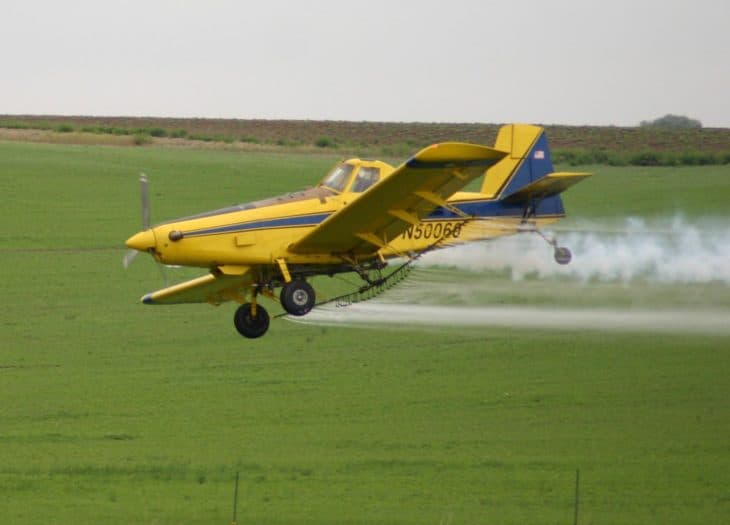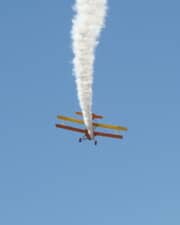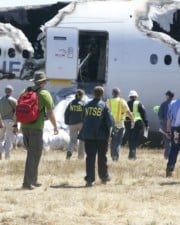Many farms around the world depend on agricultural airplanes to help them yield a profitable harvest. But with a minimum of 60 accidents recorded a year, is it safe to fly a crop duster and what are the most common causes of accidents?
Is Crop Dusting Dangerous?
Yes. Despite technological advances and the aviation industry becoming highly monitored and safety conscious, crop-dusting remains a ‘dangerous line of work’ for its pilots. In 2017, there were 67 incidents involving agricultural airplanes, with 7 of these resulting in a fatality.
Some Perspective
Planes have been used for agricultural purposes for almost 100 years, so it seems strange that this industry is still so risky. In 2017 0.02% of AG pilots had a fatal accident, compared to a fatal accident rate of 0.003% among GA pilots.
The same year, there were over 40,000 people killed in car accidents in the US alone, giving it roughly the same fatality risk as crop dusting. Although, it is worth noting that we hop in our cars every day, whereas this is not likely the case for AG pilots.

What is perhaps most startling, is that this figure does not appear to be reducing. Whilst commercial aviation has improved its accident rate by 80% in the last decade, this is not the case for agricultural aviation. Today, ‘dodging trees, homes, power lines and on-lookers’ as an AG pilot causes, on average, 5 accidents a month just in North America.
Why Is Crop Dusting Dangerous?
Power Lines
AG flying is a physically demanding and hazard-rich environment. Collision with objects, namely power lines, is the most common cause for accidents in this type of operation.
Obstacles under 200ft are not required to be marked or mapped by the FAA and so power lines are notoriously difficult to spot when flying as low as crop dusters do, even if you know where to look for them.
Travelling at speeds up to 200mph, power lines will easily ‘slice a plane in half’. Although some AG planes have wire cutters on the landing gear and guides that prevent wires from slicing through the tail, these features do not eradicate this risk.
Stalls
Fatalities in this industry however, are often the result of stalls. A stall is what happens when the wing loses its ability to generate lift, and is dependent on a number of factors including the plane’s speed, wing shape and air density.
When at altitude, stall recovery is relatively simple, but the pilot must descend in order to do this. But if an AG plane is only 6ft above the ground, there is no room for such a recovery. To avoid this, pilots must make sure to keep their speed up, even in tight turns and evasive maneuvers.
Check out this video to see just how challenging this flying can be:
Fatigue
Other accidents have been put down to pilot error, which is not surprising, considering that many working days can last up to 14 hours, often in the stifling heat! With up to 12 landings scattered throughout the day, accidents are incredibly likely once the pilot has become fatigued.
The work requires regular steep, tight turns to be conducted (somewhere around 70 degrees angle of bank) which generates 3G (3 times the force of gravity). Doing this repeatedly in a heavy plane puts considerable stress on the body and the mind.
One pilot says: “You have to be at peak physical performance to survive the busy season. You also have to know when it is time to quit either due to physical fatigue, mental fatigue or sleep deprivation. The head game is a big part of safety.”
High Pressure for AG Pilots
Human factors always play a large role in safety culture. AG pilots are often subject to pressure from farmers and operators who may have poorly planned the time and resources needed for a particular job.
This can put pilots in a position where they feel pressured to operate in conditions they are not comfortable with. The advice from experienced AG pilots is simple: trust your gut.
The National Agricultural Aviation Association produced a document called ‘Advice to AG pilots, from AG pilots’ and it repeatedly urges its readers to avoid rushing and ensure they are in a calm headspace before stepping into the cockpit.
One Los Angeles-based pilot warned ‘anytime anyone, be it your boss, dispatcher or farmer makes you angry – DO NOT get into that airplane. Stay on the ground until you calm down. If you do not, (you will) never see those power lines’.
How Can AG Pilots Protect Themselves?
There are a number of ways pilots can protect themselves in the AG world. The FAA advises that pilots should be especially careful with maintenance and preflight walk-arounds. In other words, ‘refuse to fly junk!’. These planes are flown all day at max continuous power and so maintenance must be carried out regularly to keep the pilot safe.
Wearing a helmet is also a simple way to improve safety, reducing the likelihood of being knocked unconscious in an accident, enabling the pilot to escape a crash site and survive. Fire retardant clothing is also a benefit for this reason (4/7 of the 2017 fatalities listed fire as a contributing factor).
But potentially the best way for a pilot to increase their safety margin is to attend meetings held by safety organisations such as PAASS (US) and stay up to date with safety bulletins issued by relevant institutions like NAAA or NZAAA in New Zealand.
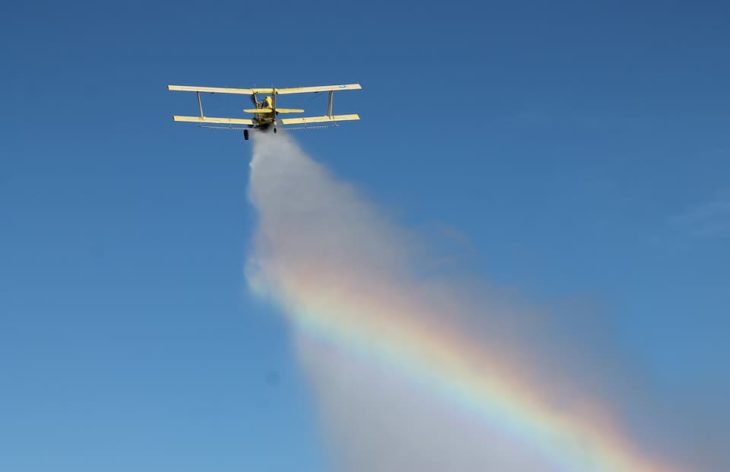
Is Crop Dusting Bad For The Environment?
With all these pesticides drifting around in the air, it’s feasible that some of these nasty chemicals might find their way to the lungs of pilots, farmers and local residents.
Many countries have therefore banned the aerial spraying of pesticides due to concerns for the environment and citizen health.
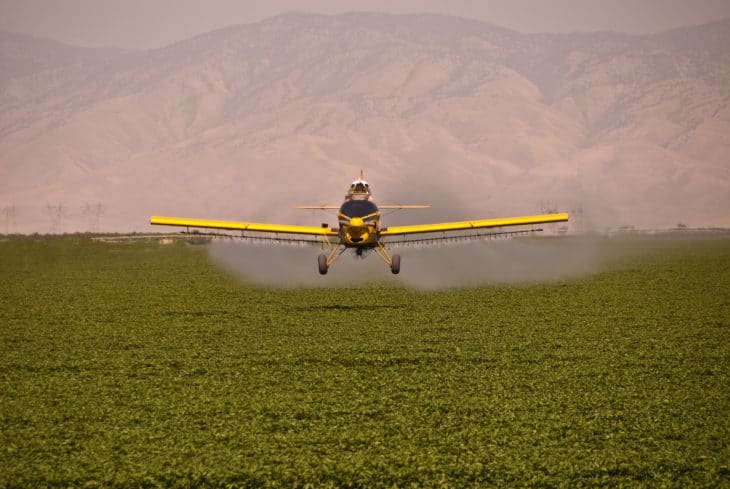
Most chemicals used in AG are insecticides or herbicides, to kill weeds or mosquitos, but these can often be carcinogenic or harmful to animals. Therefore aerial spraying is only allowed in places like Europe if a thorough risk assessment is submitted, and only approved chemicals are used.
But chemical drift can occur after application also. Pesticides applied to crops can contaminate the run-off (water that drains away from the crops through the soil) and pollute nearby water systems. It can also rise with the water vapour on misty mornings and drift to places as far as 8 miles away.
In these instances, the chemicals themselves are the danger, with locals claiming to suffer all manner of illnesses as a result of their use. With the advent of genetically modified crops, many farmers are now able to plant crops with insect resistance built into their DNA. Although this less harmful alternative to crop spraying is much better for local ecosystems, it may spell the end of dangerous crop dusting as we know it.
References ▾
- https://www.aviation.govt.nz/safety/health-and-safety/agricultural-operations-safety/
- https://www.britannica.com/topic/crop-duster
- https://coastrangeforestwatch.org/research-and-resources-on-the-negative-effects-of-pesticide-and-aerial-spray/
- https://www.cdc.gov/zika/vector/aerial-spraying.html
- https://www.europarl.europa.eu/factsheets/en/sheet/78/chemicals-and-pesticides
- https://prezi.com/q7-4d9cbpxvq/the-prows-and-cons-of-crop-dusting/
- https://www.health.state.mn.us/communities/environment/hazardous/docs/pdriftpatient.pdf
- https://www.scientificamerican.com/article/pesticide-drift/
- https://livinghistoryfarm.org/farminginthe40s/pests_04.html
Related Posts
